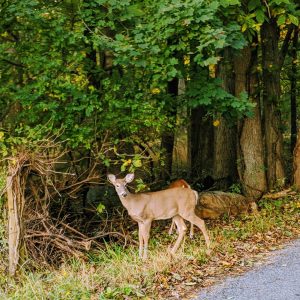Cape Daisy Growing Tips | Get More Blooms!
Hailing from South Africa, the cape daisy adds an exotic touch to your flower garden. This attractive bloom makes an incredible cut flower for indoor arrangements and also elevates the mood of your flowerbeds.
One of social media’s darlings in 2020, the Zulu Prince Cape Daisy blew up gardening Facebook and Instagram feeds that summer. White cape daisies may also be known as white Monarch of the Veldt daisies.
From the family Asteraceae, the cape daisy’s scientific name is Arctotis fastuosa syn. Venidium fastuosum. These flowers are part of the same tribe as
I am still waiting for three of my cape daisies to bloom this summer. The first and only to open so far is a gorgeous and bold, golden yellow color. The flower itself would be lovely in a vase but so far, it’s only offered one blossom at a time.
I do see at least two more buds forming, so I think by late summer, early fall, this flower should be a true stunner.
Keep reading to learn more about the Veldt daisy and how to care for it.
What Does the Cape Daisy Look Like?
Cape daisies feature velvety silver-colored foliage that is soft to the touch, and daisy-like flowers that almost resemble unique sunflowers. A bold, ringed center sets these cape daisies apart from others of a similar name.
Loved for its unique markings, the Zulu Prince Cape Daisy (white Monarch of the Veldt) features stunning white petals brimming from a dark black and bronze center with colorful circles beaming outward. This white cape daisy can be easily mistaken for white sunflowers in photographs.
Several cape daisy color combinations are also possible, such as golden yellow, orange and white. The color may come as a surprise when growing the cape daisy from seed.

Do Cape Daisies Come Back Every Year?
The answer is, it depends. Cape daisies do not come back every year if the threat of frost becomes a reality. However, these stunning flowers can grow well in growing zones that remain mild all year without freezing temperatures. As a tender perennial, the Arctotis fastuosa plants are hardy to USDA zone 9-11.
In fact, Arctotis fastuosa flowers are naturalized in parts of California. Some may even consider this flower invasive there due to its ability to spread by seeds as well as rooting from the stem.
Is Cape Daisy a Perennial Plant?
Cape daisies are considered a tender perennial. This means they can grow as a perennial where the climate is warm enough to avoid frost all year.
Due to their frost intolerance and limited hardiness zone, cape daisies are treated as annual flowering plants in many northern gardens.

How to Grow Cape Daisy from Seed
Growing cape daisy flowers from seed is truly rewarding. It’s exciting to wait and see what color the blossoms will be.
Follow these steps to discover how to grow cape daisy from seed the easy way:
- Prepare your egg cartons or small nursery pots with potting soil.
- You may also direct seed cape daisies if desired, after the threat of frost has passed.
- Sow cape daisy seeds very close to the surface, about 1/16 of an inch.
- Use a spray bottle to moisten the soil thoroughly. Place under grow lights in the winter or outside in the sunlight during the summer.
- Check soil moisture daily. Spray the soil with water as needed.
- Once the seedlings emerge, continue to water them and provide sunlight or grow lights.
- Harden off your cape daisy seedlings when they are a few inches tall.
- After sufficiently hardened, transfer cape daisies outside to your garden or a container.
- Once they bloom, deadhead cape daisies to remove spent blooms. This will increase your plant’s flowering potential!
Cape daisy flowers tend to be more drought tolerant than you might expect. However, be sure to check them throughout the week to ensure they’re thriving.
Once you have enough flowers growing, consider cutting a few for a breathtaking cut-flower arrangement.
Did You Know?
Some resources out there use the term “African daisies” for both Arctotis fastuosa and Dimorphiteca varieties. This can be confusing for gardeners growing these flowers for the first time.
For best results, figure out which type you wish to grow and search for your information using the scientific name.

Final Thoughts: Growing Cape Daisies
The Arctotis fastuosa cape daisy is one of my favorite new flowers this year. It’s the first time I’m growing them and still hoping one of mine will open to be the white cape daisy I’ve seen so many times on social media.
I can’t wait until we have a few more blooms so I can cut some for an indoor bouquet!
Cape Daisy Fun Fact
Arctotis fastuosa cape daisies close up at the end of the day and open their blooms again in the morning sun. At first, I saw the closed bloom returning from vacation late in the evening and thought I’d missed the flower! Fortunately, it opened bold and true the next morning and many days thereafter.
Are you growing Arctotis fastuosa cape daisies this year? Let’s chat in the comments! Any questions, ask away – and we’d love to hear your best tips, too!
And, if you like the Arctotis fastuosa cape daisy, feel free to pin this post to your gardening board or share on social!







How many days to maturity for this seed?
Hi Dianne, thanks for your interest! Depending on conditions, I believe these should bloom in about 80 days – roughly 2 and a half months or so. Best of luck and hope you love them!